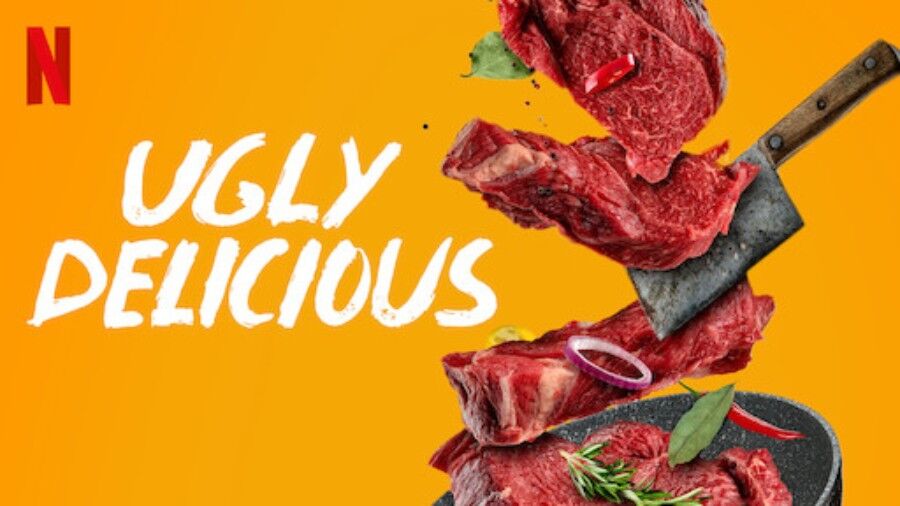Do spices belong on pizza?
Understanding Spices
Your cart is empty.
SUBTOTAL
£0.00

Understanding Spices
Ah, pizza. Who doesn’t love pizza? It’s up there with chocolate as one of the most universally adored foods – a dish that’s so simple, yet brings us so much joy.
It also brings intense debate and discussion – sometimes outright disagreement and depending on who you are and what side you fight for, sacrilege. Does pineapple really belong on pizza? It has long been thought that this argument may well be the catalyst for a third world war.
While we’re not prepared to die on this particular hill (pineapple absolutely does belong on pizza), there is another discussion to be had. Do spices belong on pizza?
This discussion was first sparked while watching episode one of David Chang’s ‘Ugly Delicious’ (well worth a watch on Netflix). In this season opener, Chang and co-host foodie writer Peter Meehan sit down to discuss just how important “traditional” ingredients and cooking methods are to creating pizza.

Meehan dives in on the idea of authenticity, arguing “in terms of storytelling (it) is important to me, but authenticity in food is not a thing. It’s like whoever gave you that authentic food experience has probably never thought about themselves as authentic. There’s a reductive quality to saying something’s authentic.”
Brooklyn pizzeria owner Mark Iacono later counters “you can throw ramen on top of pizza dough. Is it pizza? Nah.” And so, we ask from our sofa, what about spices? If we add spices to our pizza, is it still a pizza in the true, authentic sense?
The episode visits Naples, Italy to interview a stern, very-serious Atonio Pace – head of the Association Verace Pizza Napoletana (AVPN). The Naples folk take their pizza so seriously that they’ve gone ahead and formed this ‘AVPN’ for the sole purpose of maintaining and policing a uniform code and style of Neapolitan pizza-making, all over the world. Those who dare to step outside the boundaries are cast as outsiders – evil no-gooders who have strayed from the light. It’s both admirable and quite frightening, all at the same time.
For a full look at their rules and regulations, you can visit the AVPN site.

Whilst impossible to argue against a classic Neapolitan pizza (delicious and worthy of UNESCO World Heritage Status), we’ve ultimately sided with David Chang on this one. He argues “I hate snobs and elitism in general. I guess what I hate is being told that I can’t like something. You can’t do this? Oh, well, f*** you, I’m definitely going to do this.”
So the answer is yes, spices do belong on pizza and actually, we’d encourage it. At one point, Chang and comedian Aziz Ansari enjoy tuna and mayonnaise pizza in Tokyo (and they love it, obviously). No tomato base. Mayonnaise. While you wrestle with that one internally, we think it’s the perfect summary for the episode. Pizza, just like any other food, should be a celebration of gastronomy and experimentation in the kitchen. No good dish ever came about by adhering exclusively to the rules for centuries. To cook good food is to experiment and take risks.
So, without further ado, it’s time to spice up your pizza. Take a step back from the usual toppings and your tried-and-tested Domino’s flavours. Think outside the pizza box and weigh up how the following herbs and spices can add something completely different and unique to your pizza experience.
Before we get adventurous, let’s go through some of the most common options:
Being a member of the mint family that heavily features in Italian cooking, you’re probably not surprised to see this on the list. You’ll find fresh basil leaves dashed generously across plenty of pizza slices. The herb brings a sweet herbal note – the fresh stuff is minty, herbaceous – a few licorice notes. Meanwhile, dried basil is much like dried mint and thyme. Try it as both a topping and in the tomato sauce base itself.
Some would consider this to be the pizza herb. It’s the primary flavour in most pizza sauce recipes and you’ll find it goes really well with most toppings, including basil, pepperoni and spinach. The taste is a savoury and pungent, with earthy, minty notes that make it very versatile. Expect to find this just about everywhere.
Another mint relative, rosemary is not as common for pizza as basil and oregano, but it does work well with the majority of flavours you’ll find on your pizza. Most likely, it’s in the tomato sauce base rather than being a topping itself, although there are plenty of sausages that make use of it and they may make a nice topping!
This is a go-to. Who doesn’t have garlic in their kitchen? You could potentially roast and utilise it as a topping but we’ve found that more specifically, our smoked garlic powder is great for flavouring a base sauce. The intense aroma, its savory and earthy sulfurous notes, the way we’ve oak smoked our roasted garlic…it’s perfect. We’ve found it works particularly well with all kinds of meat and vegetable toppings. Even if you don’t use it in the sauce, a light sprinkling on the toppings goes down a real treat.
We’re going to get spicier now, as we move away from your traditional herbs and spices. Pizzas are traditionally very mild dishes so it’s fun to bring some real heat and spice to the equation. Try our crushed Guajillo chillies. Dried and crushed, there’s a mild to medium smokey heat with sweet berry flavours that intensify with a piney edge. They complement your cheese of choice very well and we’ve found them to be great for spicing up chicken and seafood toppings.
Speaking of seafood toppings, if you’re going to use some sort of fish or prawns and shrimps (remember, anything goes when it comes to pizza) then this Chermoula spice blend is a fantastic option to help flavour everything with warm, aromatic notes. You’ll only need a few pinches as it carries a powerful kick!
Using chicken, beef or lamb, this Caribbean barbecue jerk rub will work best if you can marinate your toppings overnight. You’ll notice the subtle, herbal notes of thyme mixed in with strong, powerful flavours of onion, sea salt, allspice, cayenne, nutmeg and clove. We recommend adding pineapple to your toppings for this one – it makes for a real tropical flavour.
While the name may suggest it’s for fajitas, we’ve experimented enough to know that this fajita seasoning also doubles up as a great spice for your pizza! It’s a tangy, smoky Tex-Mex blend for your chicken toppings. Other great options to pair the chicken with include refried beans and jalapenos, effectively taking a burrito and putting it on a pizza. Why not?
Alternatively, if you’re feeling adventurous you could make your own pizza seasoning from scratch. Check out this great recipe that utilises some classic herbs and spices such as basil, oregano, thyme, onion flakes, garlic powder and red chilli flakes. We have also put a bundle together to make your pizza making very easy. Take a look at our Pizza Seasoning & Spice Kit here.

Understanding Spices
Spices have long been integral to the UK's culinary landscape, adding depth, flavours, and richness to a myriad of dishes. From the pungent aroma of cumin in Indian curries to...
Read MoreUnderstanding Spices
Confetti is an essential part of any wedding day. Not only is it a wonderful way to greet a newlywed couple, but it also provides some beautiful photo opportunities. The...
Read MoreSeasonal Ideas
It’s no secret that any handmade gift will always be more special than a store-bought one. Homemade food gifts are especially wonderful, a labour of love that shows someone you...
Read MoreHealth and Wellbeing
It’s no secret that winter’s cold and gloomy weather makes us crave indulgent dishes like fondue and baked goods like sticky toffee pudding and apple crumble. While Christmas is the...
Read More